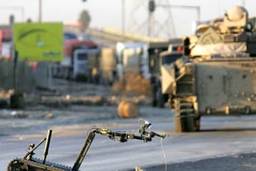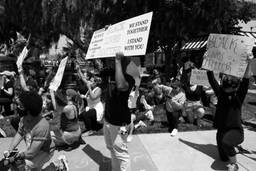When George W. Bush issued Executive Order 13224 on Sept. 23, 2001, presenting a protocol to combat al-Qaeda and other terrorist organizations of “global reach,” Hezbollah, the Lebanese Shia organization, was not on the list, despite the fact that in 1997 the State Department had designated it a “foreign terrorist organization.” Two weeks later, under congressional and external pressure, the administration amended the order and Hezbollah was added. The administration’s initial omission indicates the complex nature of Hezbollah. How do you classify and develop policy toward an organization that has committed acts of terrorism in the past, that currently provides important social services such as health care, schools and financial services, that defends its country from occupation in the south, and that plays by the rules in official Lebanese national politics (and thereby exercises democratic principles in a region with a less than stellar democratic record)?
Richard Norton, professor of international relations and anthropology at Boston University, elucidates these domestic and international complexities in his new book, Hezbollah: A Short History. Working as an observer with the United Nations Truce Supervision Organization, Norton first encountered the Shia of Lebanon in 1980 – in the midst of Lebanon’s bloody 15-year civil war and two years after Israel’s 1978 invasion. In Hezbollah, Norton addresses both the fundamentals (the basic tenets of Shi’ism, the Lebanese civil war and biographical notes on prominent Shia figures) and the complex issues (the oscillating relationship with Palestinians and the PLO, carefully cultivated relations with Syria and Iran, and the “rules of the game” in engaging Israel during the occupation of southern Lebanon).
Most Americans remember Hezbollah for its 1983 attack on U.S. marine barracks in Beirut that killed 241 servicemen. As Norton notes, Hezbollah has engaged in that and other acts of terrorism, such as the hijacking of TWA flight 847 in 1985 and the 1998 kidnapping of Lieutenant Colonel William R. Higgins of the U.S. Marines, an unarmed U.N. observer who was tortured and murdered. While the blame was not undeserved, Norton argues that it is “generally easier to trace much of the terrorism of the ’80s and early ’90s to Iran than to Hezbollah.”
He writes: “For Iran, the creation of Hezbollah was a realization of the revolutionary state’s zealous campaign to spread the message of the self-styled ‘Islamic revolution.’ From Syria’s standpoint … supporting Hezbollah allowed Syria to maintain its alliance with Iran, gain the means for striking indirectly at both Israel and the United States, and keep its Lebanese allies, including the Amal movement, in line.”
Unlike other recent books on Hezbollah, such as Judith Palmer Harik’s Hezbollah: The Changing Face of Terrorism, Norton’s was written after the 2006 war, which was touched off when Hezbollah captured two Israeli soldiers in Israel and provoked an Israeli offensive that left more than 1,000 (mostly Shia) Lebanese dead. Although Hezbollah admits that it miscalculated the extent of Israel’s response and would not have acted as it did had it properly assessed the situation, the war had no victor. However, Norton writes that the war “solidified Hezbollah’s role as both a political player in Lebanon and a regional exemplar for other opposition-minded Muslims.”
One of Norton’s shortcomings is his willingness to cater to certain themes overemphasized by essentialist writers and scholars of the Shia. For example, he devotes seven pages to one element of Ashura (the commemoration of Imam Hussein’s martyrdom at Karbala), namely bloodletting (tatbir) – a nicking of the forehead to induce bleeding that symbolizes the beheading of Imam Hussein. Sensationalist media accounts often depict Shia with footage of processions of men marching down the street with blood dripping down their heads and faces. And while Norton points out that this is “not to every Shi’i’s taste,” and Hezbollah’s religious leader, Muhammad Hussein Fadlallah, disapproves of the practice, he still devotes a significant portion of a short book to it, thereby legitimizing the simplistic, sensationalist media accounts he hopes to avoid.
In a similar simplification, Norton refers to Hezbollah as a Janus-faced organization, suggesting that it acts in one capacity in order to deceive in other capacities. A more useful analysis would explain that each of Hezbollah’s dimensions – as a militia, as a legitimate political party, as a provider of social services – work in conjunction with the others. For example, it is precisely because of the social services it provides to (mostly southern) Lebanon that it is afforded the privilege of operating as an armed militia in the south with tacit consent and support.
Nonetheless, with other similarly complex organizations on the rise, such as Hamas in Palestine, Norton provides a model of how we might begin to think through their multidimensional, seemingly contradictory natures.







